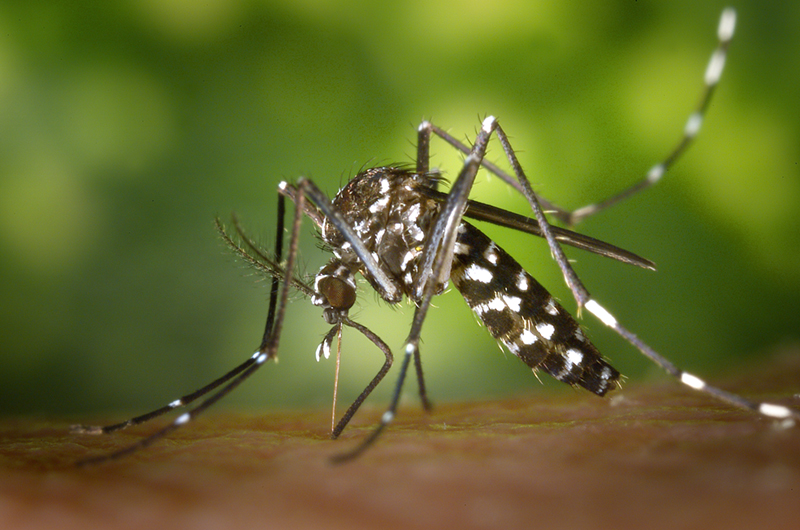Educating yourself with information about the Zika virus is an important preventive measure for you, your family and the community. Following are some common myths about the mosquitoes that carry the Zika virus.
MYTH: I live close to ponds, swamps and lakes, so I’m more at risk for Zika because mosquitoes live and breed in those areas.
TRUTH: Although there are up to 40 mosquito species in Central Florida, the two types of mosquitoes that can potentially transmit the Zika virus – Aedes aegypti (Yellow Fever mosquito) and Aedes albopictus (Asian Tiger mosquito) – do NOT breed in wetlands such as ponds, swamps and lakes. These types of mosquitoes are “urban” mosquitoes and they rely on humans for survival. These insects are typically day biters and are drawn to standing water in small, artificial containers. They lay their eggs in shallow water and it takes only five days for the larvae to develop into adults. Therefore, it’s essential to get rid of standing water around your home and “Tip, Toss and Cover.”
MYTH: The mosquitoes that potentially carry Zika can travel far and fly long distances.
TRUTH: These mosquitoes tend to travel about 150 yards from where they are born. Females live about a month and males have a shorter life span. That’s why it’s so important to get rid of the standing water around your home. Remember, it’s not the mosquitoes that move this virus, it’s people who move the virus.
MYTH: If I’m not pregnant or thinking about becoming pregnant, I don’t have to worry about Zika.
TRUTH: Although the most serious health risks of Zika pertain to pregnant women because the virus has been linked to cause a significant birth defect known as microcephaly, this is an issue that every citizen should be concerned and vigilant about in their prevention measures. If you are carrying the Zika virus and a mosquito bites you, that mosquito may contract Zika and infect the next person it bites. The virus is spread from mosquito to human to mosquito to human. Humans can also transmit the virus sexually. Only one in five people exhibit symptoms from the virus, and thus, may unknowingly have the virus and transmit it to someone else.
Top 8 Zika Myths
MYTH: You can get rid of the mosquitoes that carry the Zika virus just by spraying.
TRUTH: Spraying is part of the solution in targeting mosquitoes. It’s comforting to know that the spray’s active ingredient, which is found in many flea and tick treatments and shampoos for dogs as well as lice treatments, is not harmful to humans. Unfortunately, you can’t “spray your way” out of this problem. Spraying isn’t as effective with these mosquitoes primarily because spraying is not done during the day when these mosquitoes are active. Spraying is typically done after sundown because the control materials in the spray are broken down by sunlight. In the evening, these day-biting mosquitoes can rest and hide in plants and under leaves. The most effective way to control these insects is to get rid of their larvae habitat – and that is achieved by eliminating standing water.
MYTH: My pets are at risk for Zika.
TRUTH: There is no indication that Zika affects anyone but mosquitoes and humans.
MYTH: Certain types of animals can control the mosquito population.
TRUTH: Animals such as bats, owls and other birds cannot control the mosquito population. Although they may include mosquitoes in their diet, they do not consume enough mosquitoes to make a significant difference in their populations. The mosquitoes that carry Zika are day biters, so they’re on a different schedule than nocturnal bats.
MYTH: These types of mosquitoes are new and have recently traveled to Florida.
TRUTH: The Yellow Fever mosquito was introduced to the United States in the late 1800s and the Asian Tiger mosquito arrived in the 1980s. Orange County Mosquito Control has been combatting these types of mosquitoes for decades. Orange County has been proactively and aggressively combatting these mosquitoes because they can also potentially carry chikungunya and dengue fever, which produce flu-like symptoms characterized by a high fever and joint pain. Proactive measures by Mosquito Control have always included targeting these types of mosquitoes.
MYTH: These mosquitoes can breed in damp soil.
TRUTH: Damp soil, patches of wet grass or damp leaves are not breeding grounds for these types of mosquitoes. Mosquito larvae are aquatic organisms. The preferred breeding habitat is standing or still water. As little as one teaspoon or bottle cap of water standing for more than one week is enough for mosquitoes to breed and multiply. At least once a week, empty, turn over or cover anything that could hold water.


